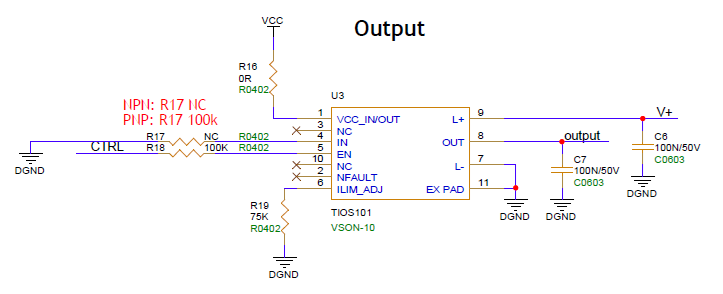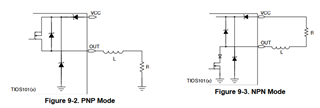Hi Team,
customer tested the OCP function with the below schematics and found the problem.
V+=24Vdc, Vcc=3.3V, output is PNP or NPN type loading.

The test result as below.
|
output type |
OCP startup value |
OCP recover vaule |
Note |
|
NPN |
68mA |
67mA |
remove R17 |
|
PNP |
68mA |
15mA |
R17 is 100k |
May I know what is the reason of the different values for NPN and PNP type loading?
Thanks.


